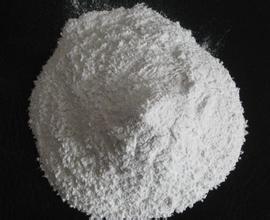Sintering flue gas desulfurization magnesia technology and its application status
Date:2016-08-31 Author: Click:
At present, the sintering flue gas desulfurization technology mainly includes limestone/lime-gypsum method, double alkali method, desulfurization magnesia, ammonia-ammonium sulfate method and the like.
1. Limestone/lime-gypsum method and application
The limestone/lime-gypsum method is the earliest SO2 removal technology for industrial applications. The method utilizes a slurry of limestone or lime as a desulfurizing agent, and reacts with SO2 in the flue gas in the absorption tower to perform desulfurization, and the reaction product is a by-product gypsum. After desulfurization, the flue gas is defogged and discharged out of the chimney. The process flow is shown in Figure 1. Initially, the solubility of CaSO4·2H2O generated during the operation is very low, which is easy to cause scale and blockage of the equipment and affect the operation of the system. Later, by providing gypsum seed crystals to the system, the supersaturation of gypsum in the system slurry was controlled, and the scaling and clogging problems were basically solved. See the situation table for some industrial applications
2, double alkali method and application
The double-alkali process is divided into absorption, regeneration and solid separation. It was originally developed by the United States and Japan for limestone/lime-gypsum method for scaling and clogging. It has sodium-calcium double-alkali method, calcium-calcium method and alkaline. Aluminum sulfate-gypsum method, ammonia-gypsum method, and the like. It is now used in the sodium-calcium double-alkali process, that is, the sodium hydroxide (Na2CO3/NaOH) in the absorption tower absorbs SO2, and the calcium-alkali [Ca(OH)2] is used in the column to regenerate and recycle the NaOH. high. The method is suitable for treating flue gas with high SO2 concentration, and has high desulfurization rate, but consumes a large amount of electricity. China's Guangzhou Steel 2×24m2 sintering machine uses the double-alkali method developed by China itself, and the desulfurization efficiency is over 84%, which meets environmental protection requirements.
3. Magnesium oxide method and application
The desulfurized magnesium oxide uses MgO as a desulfurizing agent, and the MgO raw material is made into a Mg(OH) 2 slurry and reacted with SO2 in the flue gas to mainly produce a product such as Mg2SO3. If MgSO3 is forcibly oxidized to give MgSO4, the by-product after separation is solid MgSO4. If the oxidation is inhibited, MgSO3 is not oxidized to form MgSO4, and the final product is Mg2SO3, which is separated, dried, calcined, and finally reduced to magnesium oxide and a certain concentration of SO2 gas. After reduction, the magnesia is returned to the system for reuse, and SO2 gas is used. Produce sulfuric acid. Roasting MgSO3 requires temperature control, the system is quite complicated, and the investment cost is high. The current magnesium oxide desulfurization method uses a method of forming MgSO4 as a final product.
The magnesium oxide method was first developed by Chemico2Basic Corporation of the United States. Japan has also studied the law, but because magnesium oxide needs to be imported, it has restricted the promotion. Only the Nippon Steel Bagua Plant and Sumitomo Metal Ogura Plant adopt this method.







 wangwang
wangwang
